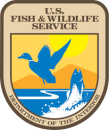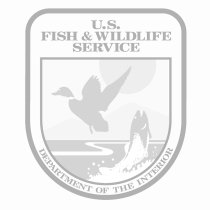Location
States
New MexicoEcosystem
River/streamIntroduction
The United States Section of the International Boundary and Water Commission (USIBWC) constructed, operates, and maintains the Rio Grande Canalization Project (RGCP). The RGCP spans 105 miles of the Rio Grande in southern New Mexico and West Texas and provides flood control while also facilitating the delivery of water to Mexico from upstream reservoirs. In June 2009, the USIBWC issued a Record of Decision on River Management Alternatives for the Rio Grande Canalization Project (ROD). In the ROD, USIBWC committed to restoring over 550 acres of riparian riparian
Definition of riparian habitat or riparian areas.
Learn more about riparian habitat, and acquiring water rights for irrigation. USIBWC partnered with the Elephant Butte Irrigation District (EBID) to develop an environmental water rights program, and with the U.S. Fish and Wildlife Service (USFWS) at San Andres National Wildlife Refuge to assist with implementing many of the restoration sites targeting endangered species habitat. USFWS assisted with irrigation planning and implementation.
Key Issues Addressed
- Restoration areas do not receive natural flows and experience seasonal changes in depth to groundwater, so supplemental water is necessary for plantings to thrive and to encourage natural recruitment of other native grasses, shrubs, and forbs.
- Shallow groundwater levels in this stretch of the Rio Grande closely match the river flows of this managed system. When the irrigation season ends, groundwater levels drop substantially and quickly, and when irrigation season starts again, groundwater levels rise accordingly. Groundwater monitoring wells at USIBWC restoration sites show variability of up to 12 feet at some sites, although at most sites the summer and winter difference is about 5 feet. Data also show that the longer the irrigation season runs, the less the difference in groundwater variability is the following year.
- Reduced groundwater availability can stress plantings. Declining groundwater levels from 2011 to 2013 led to mass die-offs of riparian vegetation along the river corridor in 2014 and 2015, and limited success of plantings at some restoration sites was due to depth to groundwater. Supplemental water during these harsh times is critical for the survival of plantings.
- Irrigating restoration sites presents a unique set of logistical challenges, including coordination with the irrigation district, determining the appropriate timing and duration of irrigation, developing sites in a manner that encourages water flow to where it is needed, and constructing infrastructure for water deliveries.
Project Goals
- Construct infrastructure to irrigate restoration sites, including some upstream of the existing irrigation ditches
- Efficiently irrigate restoration sites to help the plantings get established and thrive
Project Highlights
Informed Site Selection: Pre-construction site visits facilitated valuable discussions on irrigation methods and which sites were the most feasible for irrigation and highest priority for the application of water rights.
- Demonstrated Success: At Leasburg Extension Lateral Wasteway #8 Restoration Site, near Las Cruces, NM, about 3.5 acres were irrigated initially. Later, irrigation was expanded 1.2 acres using a reinforced concrete pipe placed at the low end of the original area. Irrigated 11 times from 2014 to 2018, water rights support almost 5,100 willow and cottonwood trees and 250 native shrubs planted between 2011 and 2018 at this site. It is adjacent to an irrigation spillway, allowing efficient delivery of water using existing infrastructure. Survivorship of the plantings increased after irrigation began in 2014. The added moisture aided recovery from a brush fire in 2017.
- Irrigation Infrastructure for Restoration: USIBWC contracted EBID to design and construct a diversion structure structure
Something temporarily or permanently constructed, built, or placed; and constructed of natural or manufactured parts including, but not limited to, a building, shed, cabin, porch, bridge, walkway, stair steps, sign, landing, platform, dock, rack, fence, telecommunication device, antennae, fish cleaning table, satellite dish/mount, or well head.
Learn more about structure at Garfield Canal to irrigate the Crow Canyon B restoration site in Hatch, NM. The structure terminated in a galvanized pipe, which USFWS connected to a pressurized PVC piping system to push water upstream to the earthen V-ditch flow channels on-site, irrigating about 3.6 acres. - Using a Pump: Mesilla East Restoration Site is located on the upstream side of an irrigation ditch where building a diversion structure was not an option. Instead, USIBWC and USFWS used a large 16” gator pump with a tractor to pump water upstream. Water was pumped into 12-inch diameter PVC pipes with 3 lateral pipes to irrigate different portions of the site. Over 4,700 gallons per minute were delivered, irrigating about 5.7 acres in 6-7 hours.
- Flexibility during Shortage: In water shortage years, when water deliveries were delayed into May or June (after the spring leaf-out of recently planted trees), a meter connected to a municipal hydrant allowed USFWS to fill up 4000-gallon water tender trucks for transport. Once at the restoration sites, a hose was used to irrigate young trees.
Lessons Learned
Using irrigation PVC piping systems was a successful way to get water to a site upstream of existing irrigation infrastructure. Several T-pipes, each with their own gate, allowed for irrigation of multiple sections of restoration sites.
Changes to site conditions are often required after irrigation begins. During the first irrigation event, crews would note areas that did not flow well. After the site was dry, they could bring out equipment to do minor re-contouring, change the berms, or redirect flow channels.
Delivering water by truck during shortage years was labor intensive. However, the cost was relatively low (less than $1,000 for several 4,000-gallon trucks), and these measures helped sustain the trees until the irrigation flows could be delivered.
The first irrigation site had an earthen berm on the irrigation ditch that allowed water to be diverted into the restoration site without flowing back into the river via the ditch. After each irrigation event, the berm had to be removed using heavy equipment. Eventually, EBID built a diversion structure across the ditch with a turnout that functioned in the same way but was permanent.
It is important to have heavy equipment on-site during irrigation events. For these restoration sites, equipment was used to fix areas of the berm that leaked due to gopher holes. Sometimes berms breach during the irrigation, and a small skid steer can be used to fix issues during irrigation so that water is applied where desired.
Timing and duration of irrigation events depends on availability of water. In some years, USIBWC obtained extra water through the irrigation district’s annual leasing system in order to complete multiple irrigation events.
Next Steps
- Work with the irrigation district to design and construct additional diversion structures to facilitate irrigation at two additional sites
- Continue ongoing maintenance of irrigation infrastructure
- Update the River Management Plan, USIBWC’s long-term management plan
Funding Partners
United States Section of the International Boundary and Water Commission
Resources
- CCAST Case Study: Rio Grande Water Transfer Program: Providing Water for Restoration
- Rio Grande Canalization Project - Project Documentation (list of all documents associated with project with links)
- Audubon Article: Leasburg Restoration Site Information
- IBWC Restoration Overview Map
- Leasburg Restoration Site 2014 Joint Press Release
- IBWC Conceptual Restoration Plan and Cumulative Effects Analysis, Rio Grande—Caballo Dam to American Dam, New Mexico and Texas
Contact
Elizabeth Verdecchia, USIBWC: elizabeth.verdecchia@ibwc.gov
Case Study Lead Author
Amanda Webb, CART Research Specialist, University of Arizona
Suggested Citation
Webb, A., D. (2018). “Irrigation of Riparian Habitat Restoration along the Rio Grande Canalization Project.” CART. Retrieved from https://www.fws.gov/project/irrigation-riparian-restoration-along-rgcp.






